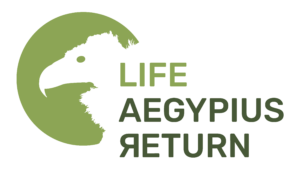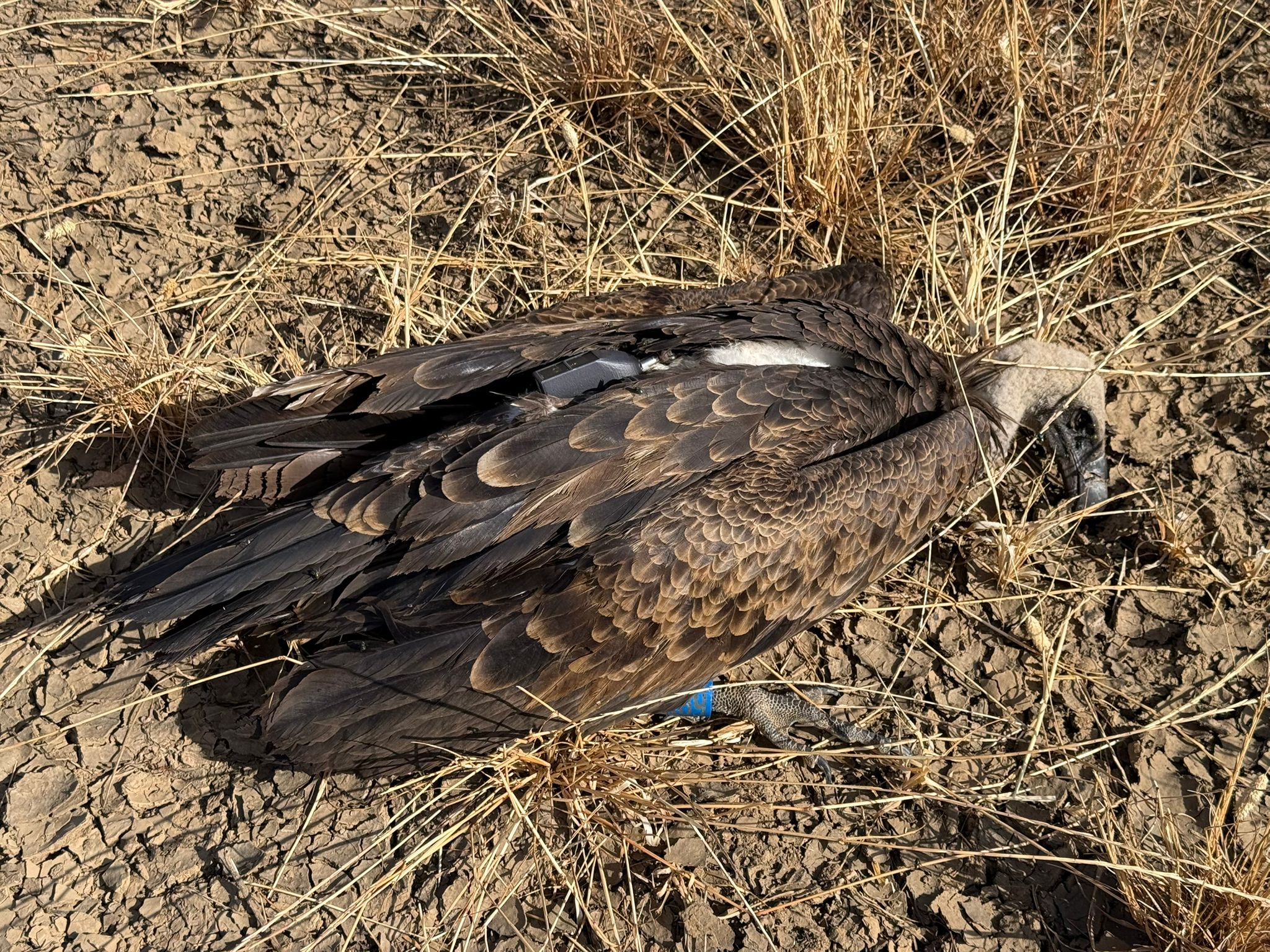Nine new artificial nests have been installed in the most fragile Cinereous Vulture breeding colony in Portugal. At the Douro International Nature Park (PNDI), along with the nests, a very realistic Cinereous Vulture sculpture was placed in the intervention area to entice new breeding pairs to settle in. A conservation measure for the consolidation of the species in Portugal and western Spain, implemented in the LIFE Aegypius Return project framework.

Cinereous Vultures in Northeastern Portugal
There are 78-81 breeding pairs of Cinereous Vultures (Aegypius monachus) in Portugal, contrasting with the 40 nesting pairs estimated in 2022. The high increase in this number results from careful prospecting for new nests, monitoring, and data coordination from various organisations.
The most remote, isolated and fragile colony is in the Douro International Nature Park, monitored by Palombar in collaboration with the Northern Regional Delegation (DR) of the Institute for Nature Conservation and Forests (ICNF). This year, and for the first time since the species returned to the region in 2012, the colony had three nesting pairs. However, only two chicks successfully left the nest.

Nine artificial nests installed in the Douro International Nature Park
To increase the number of nests available for Cinereous Vultures in the PNDI, nine new nests were installed, and four existing artificial nests were repaired. Project partner Palombar was responsible for the operation, collaborating with Dirección General de Emergencias – Cuerpo de Agentes Forestales de la Comunidad de Madrid and researchers from the University of Oviedo in Spain.
It is hoped that the nests now installed will be occupied either by individuals that already occur naturally in the region or by those from wildlife recovery centres that are returned to the wild in the PNDI area. Two have been released this year at Miradouro do Carrascalinho, Zimbro and Gerês. By 2027, the project aims to release 20 Cinereous Vultures recovered in wildlife centres. To ensure they save the region as their breeding territory, Palombar is building an acclimatisation cage, where the birds will safely undergo a period of readaptation and habituation to the area before being released.



Installing artificial nests for Cinereous Vultures © Palombar
Luring Cinereous Vultures with a sculpture
To increase the likelihood of the new nests being occupied, a replica sculpture of a Cinereous Vulture has been placed in a tree near the new nests—a lure to attract unique breeding individuals to the PNDI. Increasing the number of breeding pairs and improving the breeding success is fundamental to downgrading the Critically Endangered status of the species in Portugal. This season, the project team monitored the four existing colonies and prospected new potential breeding sites, and visited 18 chicks in the nest, to analyse, ring and fit them with GPS transmitters. The next breeding season starts at the winter’s end. Will new pairs be attracted to the shiny nests (and sculpture) that have just been installed?


The challenges of consolidating Cinereous Vulture colonies
Unlike most vultures, which nest in rocky cliffs, the Cinereous Vulture mainly nests in large trees, such as junipers, holm oaks, cork oaks and pines. This preference makes it more vulnerable to wildfires hence, one of the project’s actions is to promote habitat management and increase natural resilience to forest fires in the areas where the species breeds. In 2017, the PNDI colony was affected by a forest fire that destroyed the species’ only nest, killing a Cinereous Vulture chick. As the species only lays one egg per breeding season, failing a breeding season has severe long-term consequences for the population’s availability.



Installing these nests will hopefully foster a thriving colony in Douro International!
The LIFE Aegypius Return Project
The LIFE Aegypius Return project aims to consolidate and accelerate the return of the Cinereous Vulture in Portugal and western Spain by improving habitat and food availability and minimising the main threats. The project team will implement specific conservation actions in ten Natura 2000 areas along almost the entire border between Portugal and Spain to double the Cinereous Vulture population in Portugal to 80 pairs in 5 colonies and thus lower the national status of the species from Critically Endangered to Endangered by 2027.

The LIFE Aegypius Return is a 3.7 million project, co-financed by the European Union’s LIFE Programme, whose success relies on the involvement of all relevant stakeholders and the extensive collaboration of the leading project partner, the Vulture Conservation Foundation (VCF), with all local partners: Palombar – Conservação da Natureza e do Património Rural, Herdade da Contenda, Sociedade Portuguesa para o Estudo das Aves (SPEA), Liga para a Protecção da Natureza (LPN), Associação Transumância e Natureza (ATN), Fundación Naturaleza y Hombre (FNHY), Guarda Nacional Republicana (GNR) and Associação Nacional de Proprietários Rurais Gestão Cinegética e Biodiversidade (APNC).




